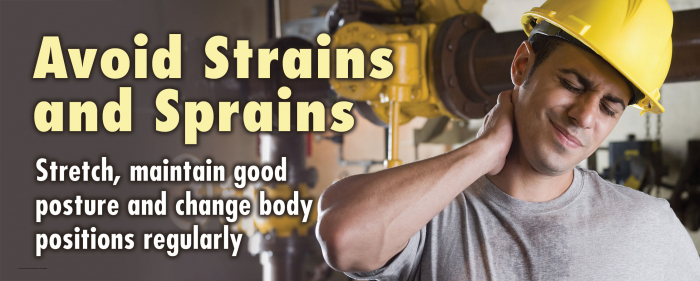Preventing Strains and Sprains
Strains and sprains are some of the most common types of injuries within our pool and although one is not technically worse than the other, both can cause significant pain and a lengthy recovery.
What is the difference between strains & sprains?
Strains affect the tendons (an easy way to remember this is sTrains = (Tendons or muscles), and sprains affect the ligaments. Both tendons and ligaments are connective tissues. A strain is when a muscle or tendon is pulled, stretched or torn. A sprain is when one or more ligaments are pulled, stretched or torn.
What causes strains and sprains?
There are three categories that causes strains and sprains: overuse, improper technique, and lack of conditioning or warming up the muscle.
- Excessive force or fatigue can contribute to a strain or sprain
- An awkward posture can place excessive force on joints and overload the muscles and tendons
- Excessive repetition or high task repetition, when combined with high force and/or awkward postures can also contribute to a strain or sprain
How can we prevent / avoid sprains and strains?
The best way to prevent sprains or strains is to keep in good physical shape with regular stretching and strengthening exercises so your muscles, ligaments, and tendons are strong and flexible enough to resist trauma. You can also incorporate workplace practices that will help reduce injury risk factors including:
- Always using good posture
- Using proper lifting techniques, including warming up and stretching your muscles before doing work, exercising or sports
- Properly aligning your joints when performing tasks and avoid twisting
- Asking for assistance, especially if the load is too heavy to lift
- Wearing protective footwear to help reduce stress on your ankles, feet, and leg joints
- Making sure you are trained in the type of work you are asked to perform, i.e., material handling training.
- Considering the use of a back belt, which could help encourage proper form when lifting
- Investigating injuries, accidents, incidents, close calls, & near misses and take immediate corrective action to prevent similar types of injuries
